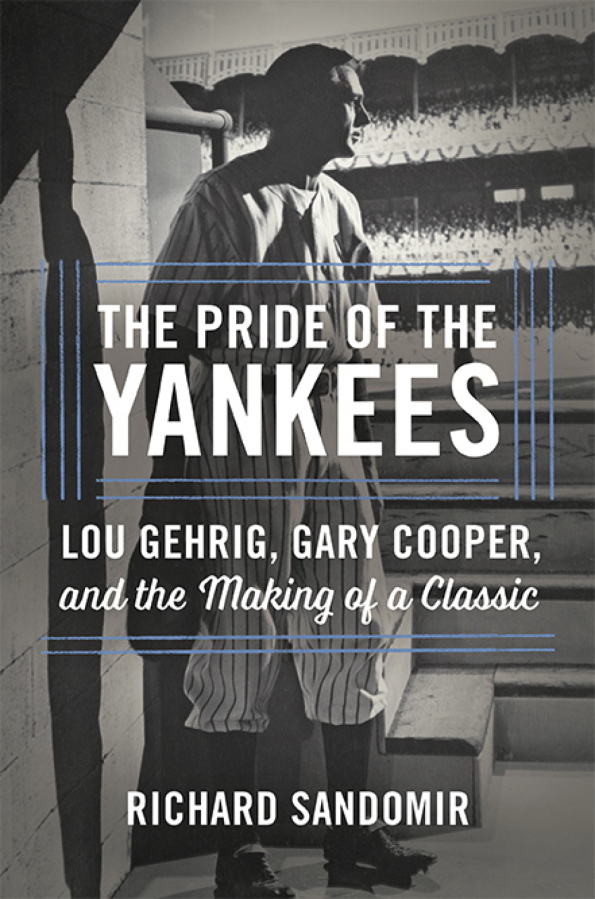The movie “The Pride of the Yankees” is the kind of Hollywood hokum that makes us feel good. And there’s nothing wrong with that — as long as we know life is usually more complicated than a Gary Cooper movie.
Recommending a making-of-the-movie book as more interesting than the film it explores is a compliment to the author. And in the case of this 1942 biopic about baseball great Lou Gehrig, an acknowledgement that time can be cruel to our youthful favorites.
“The Pride of the Yankees” is best remembered for Cooper re-enacting Gehrig’s farewell speech at Yankee Stadium. In 1939 the slugger and first baseman was dying of amyotrophic lateral sclerosis, a nerve disease soon to carry his name. His oft-quoted observation — “Today, I consider myself the luckiest man on the face of the earth” — set the standard for self-effacing courage.
When Hollywood got involved in Gehrig’s story, accuracy was destined to strike out. As author Richard Sandomir explains, producer Sam Goldwyn saw a Gehrig movie in terms of typical entertainment of the period: a portrait of a heroic figure with touches of humor and romance. For Goldwyn, the element of baseball was something to be “put up with.”
Ticket sales and 11 Oscar nominations (it would win for film editing) proved Goldwyn was right to steer clear, for the most part, of baseball action scenes. Viewed today, however, the film can come off as a syrupy blend of cliches, falling short of the enduring charm of “Casablanca” and a handful of other wartime films.
Not that Sandomir sees it that way. Overall, he still judges “The Pride of the Yankees” to be a classic that’s true in spirit to its subject. The New York Times writer researched Gehrig’s life and the story behind the movie to provide an authoritative take on what’s factual (not that much), what’s fanciful (a whole lot) and what’s a bit of both.
The Montana-born Cooper, more at home on the range than at home plate, needed lots of batting instruction, most of it taking place behind his Los Angeles mansion. One tale has it that he broke a window at neighbor Tyrone Power’s house — twice. But Sandomir refutes the folklore that all baseball scenes featuring the right-handed Cooper were reversed so he would better resemble the lefty Gehrig. Some cinematic chicanery did take place, just not nearly as much as some have said, and Cooper managed to learn to throw with his left.
A heart-tugging moment in the film comes when an ailing Gehrig, waiting for his turn at bat, realizes he can’t cut it anymore and takes himself out of the lineup, causing a shock wave in the stadium. In reality, Gehrig decided the night before and told his manager the next day. The crowd knew before the first pitch.
And then there’s the speech. Sandomir points out that newspapers published different versions of Gehrig’s farewell and that no complete newsreel of it exists. In real life, the famous line comes near the beginning of his remarks. In reel life, Cooper speaks the line at the end — the filmmakers knew a good wrap-up when they heard one.



